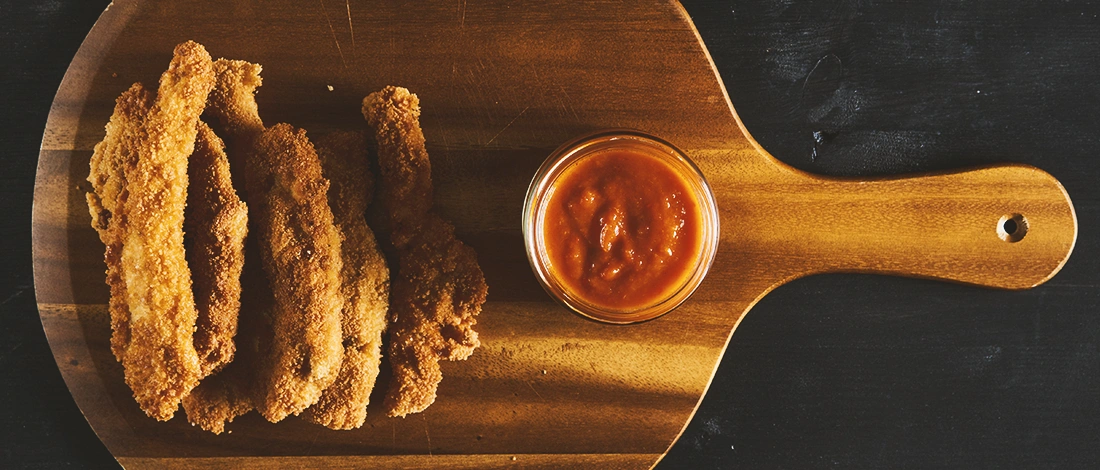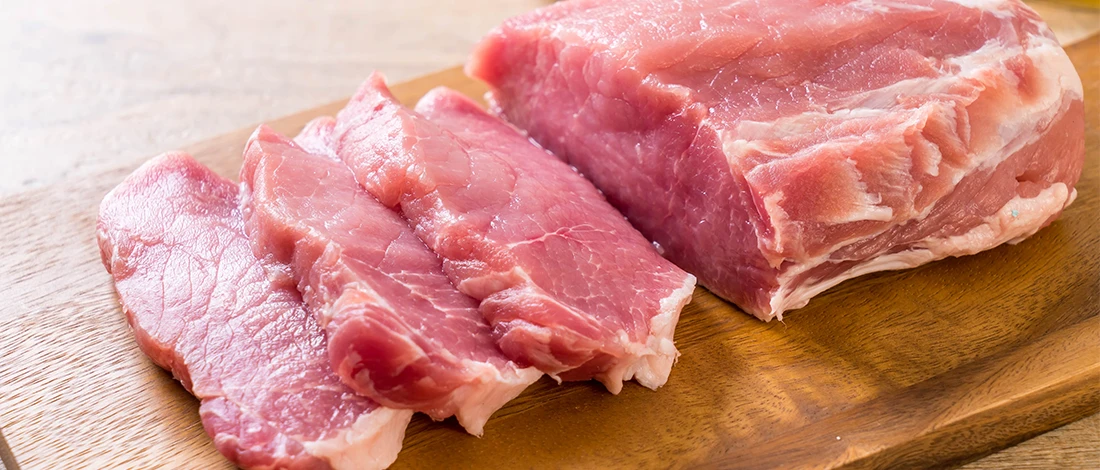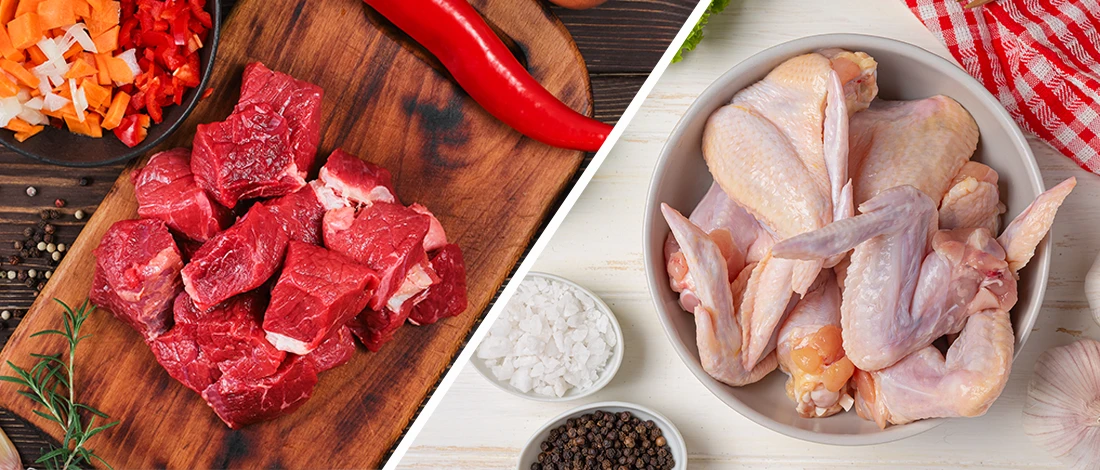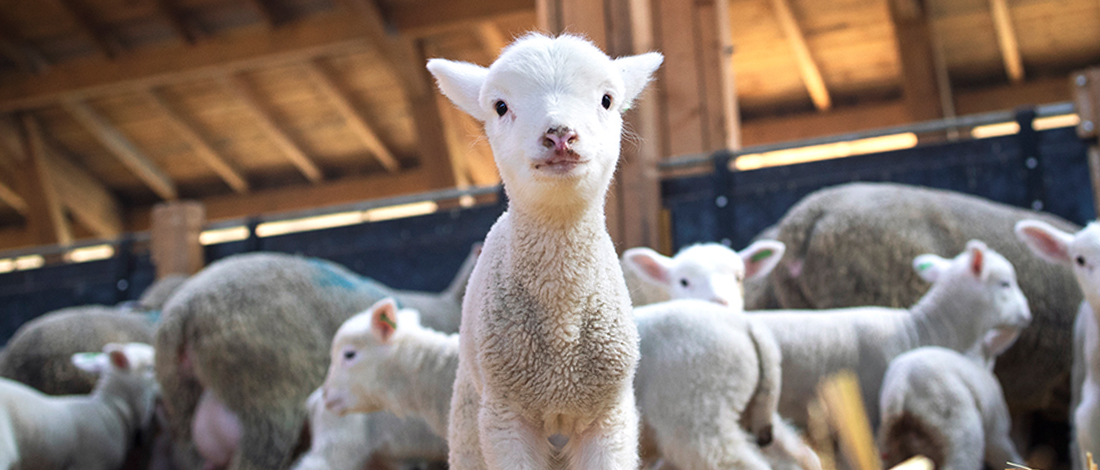What's not to love about America's favorite pizza topping? That's right, pepperoni.
As a carnivore lifestyle adherent, pepperoni is always on the menu. However, I want to know exactly what I am putting into my body, so I researched this food extensively.
Here is what I found when I asked the question, “what is pepperoni made of.”
Quick Summary
- Pepperoni is made with a mix of pork and ground beef that is cured and seasoned.
- Although pepperoni tastes Italian, it was actually invented in the United States.
- Pepperoni is high in fat and sodium, but it is also a good source of protein.
History of Pepperoni

Although pepperoni is often found on top of one of Italy's most famous dishes, pepperoni is not an Italian meat. That's right; there is no Italian salami called pepperoni; it was created in the United States.
Pepperoni comes from “peperone,” which is the Italian word for a bell pepper rather than spicy salamis.
Although Italians were making cured meats long before the founding of the USA, pepperoni is an offshoot of "dry sausage" that was sold in the U.S. Italian markets in the late 1800s.
This invention was a cured meat that was faster to make than traditional Italian fare and could be made using ingredients readily found in America.
Like chicken parmesan, pepperoni sausages were created in Italian-American specialty meat shops rather than from real Italian cuisine.
"The pepperoni food industry is growing globally due to rapid globalisation and urbanization as both established, and emerging nations have increased pizza consumption in recent years. This has resulted in pepperoni becoming one of the most popular pizza toppings."
- P.R. Newswire
Over time, this sausage evolved to become today's pepperoni, and the first known mention of the meat was in 1919 in New York City [1].
This was around the time that pizzerias and Italian butcher shops began to grow popular on the East Coast.
By the 1950s, pepperoni pizza topping was seen at Pizza Hut and Dominos and has remained so ever since.
What Is Pepperoni Made Of?

Pepperoni is a cured meat made of pork, beef, or a mixture of the two.
The process starts by grinding cuts of meat together to yield the desired texture and mix of lean and fat, usually about 30-35% fat [2].
The steps are as follows:
- Different spice blends are then added to flavor the raw sausage. These spices often include salt, fennel, black pepper, garlic powder, mustard seed, anise, and chili pepper.
- Paprika is usually added to provide the slightly reddish color for which this Italian-American creation is known.
- Once the spices are mixed in, the ground meat mixture is ready to stuff into sausage casings. These pepperoni casings are made from the intestines of animals.
- The filled sausages are usually refrigerated and left to cure for about three days. Although it does not sound appealing, the meat is fermented using lactic acid bacteria during this time.
- These bacteria produce lactic acid, the same bacteria used to make yogurt and cheese. The lactic acid helps stop the growth of harmful bacteria during the curing process [3]. In pepperoni, the lactic acid bacteria fermentation process lowers the meat’s pH balance, breaks down the proteins, and gives it its characteristic tangy flavor.
- After fermentation, the ground meat is smoked with added salt and sodium nitrate, which further adds to the flavor. Smoking also helps to preserve the meat.
- Finally, the whole stick of pepperoni is hung in a drying room for a few more days, making it shelf-stable and giving it a slightly chewy texture and intense flavor. The finished product is ready to eat in five to six days, which is much faster than a traditional curing process.
The Best Way to Use Pepperoni

Pepperoni is popularly used on top of pizza. Scott Wiener, founder of Scott’s Pizza Tours, explains that the exposure of the pepperoni to heat allows them to transform as the fat renders out, complementing the cheese and/or the sauce underneath.
Of course, you can also buy pepperoni and use this versatile meat on more than just pizza.
Of course, you can also buy pepperoni and use this versatile meat on more than just pizza:
- As an appetizer, served with crackers or bread or antipasto platters
- In grilled cheese sandwiches
- Chopped up and added to pasta dishes
- As a topping with bell pepper on salads
- Sliced and served on its own
- In pepperoni pizza rolls or Italian hoagies
- With veggie or cheese slices
- As a topping for baked potatoes
- As low-carbohydrate snack pepperoni sticks
Pepperoni Nutrition
An average 4 oz serving of this meat comes with:
- Calories: 504 cal
- Total Fat: 46 g
- Saturated fat: 15 g
- Cholesterol: 97 mg
- Sodium: 1580 mg
- Potassium: 274 mg
- Total Carbohydrate: 1 g
- Dietary fiber: 0 g
- Protein: 19 g
Like all cured meats, pepperoni is high in sodium [4].
It is also higher in fat and calories than non-processed meats.
That said, pepperoni is a low-carb food, which makes it a good choice for those on a keto or low-carb diet.
Like all processed meats, pepperoni can be unhealthy when eaten in large quantities. Not only is it high in sodium and fat, but it is also high in calories.
Additionally, processed meats come with an increased risk of cancer. However, this deli section meat can be part of a healthy diet when eaten in moderation.
Also Read: How to Cook a Pizza on a Pellet Grill
FAQs
Is Pepperoni Pork or Beef?
Pepperoni is usually a mix of pork and beef. However, you can also make it entirely from ground pork or beef. Interestingly, if made entirely from beef, pepperoni must be labeled as and called "beef pepperoni."
How Long Does Pepperoni Last?
Unopened, pepperoni lasts up to six weeks in the pantry or in the fridge indefinitely. Once opened, sliced pepperoni will last three weeks in the fridge. You can freeze pepperoni for six months as well.
Is Pepperoni Processed Meat?
Yes, pepperoni is processed meat. It is made by curing ground meat using fermentation, smoking, and drying. This curing process increases shelf-life, but it changes the spicy sausage from its natural form and thus makes it processed.
What Part of the Pig Is Pepperoni?
Pepperoni is the fatty part of the pig, such as the pork shoulder and belly. However, pepperoni is not always ground pork. It can also be made from parts of beef mixed with spices.
References:
- https://www.dogtownpizza.com/blog/the-origin-and-history-of-pepperoni/
- https://www.sciencedirect.com/topics/food-science/pepperoni
- https://www.medicalnewstoday.com/articles/lactic-acid-in-food
- https://fdc.nal.usda.gov/fdc-app.html#/food-details/174575/nutrients







